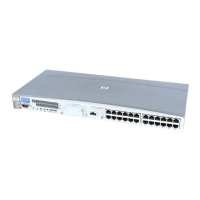resolve operation, Data Protector contacts VDS to get information about the storage
IDs of the source volumes presented on the application system. The information about
the storageIDs is required during instant recovery, in case such information cannot
be gathered at restore time.
If resolving is not performed before a backup session, one of the following happens:
• The application system is resolved automatically during the backup session, if the
OB2VSS_DISABLE_AUTO_RESOLVE variable in the omnirc file is set to 0
(default). In this case, the backup time for creating a replica is prolonged.
• A ZDB-to-disk session fails notifying you to resolve the application system before
the backup is run, if the OB2VSS_DISABLE_AUTO_RESOLVE variable is set to
1.
• A ZDB-to-disk+tape session completes with the warning that only backup to tape
was performed not leaving the replica on the disk array and thus disabling instant
recovery, if the OB2VSS_DISABLE_AUTO_RESOLVE variable is set to 1.
Always perform the resolve operation after:
• Installing or upgrading Data Protector.
• Your source volumes' configuration on the application system has changed (for
example, you have modify the existing source volumes or you have presented
new source volumes).
• You have added a new storage object (for example, a Microsoft Exchange Server
storage group).
To resolve the application system, run the following on any VSS client in the Data
Protector cell:
omnidbvss –resolve {–apphost ApplicationSystem | –all}
where ApplicationSystem is the name of the application system you want to
resolve. In a cluster environment (for example, Microsoft Exchange Server CCR),
provide the virtual server name for the ApplicationSystem parameter to enable
the resolve operation on both cluster nodes.
To resolve all application systems in a cell simultaneously, use the option –all.
Alternatively, you can set the omnirc variable
OB2VSS_ALWAYS_RESOLVE_SOURCES to 1. In this case, the source volumes on the
application system are resolved automatically during every instant recovery-enabled
backup session, but the replica creation time is considerably prolonged. However,
do not set this variable to 1 in a CCR Microsoft Exchange environment if you plan
to back up only the database copy disks and leave the possibility for eventual instant
recovery from these disk to the production database disks. In this case, the production
Integrating the Data Protector ZDB integrations and Microsoft Volume Shadow Copy Service348

